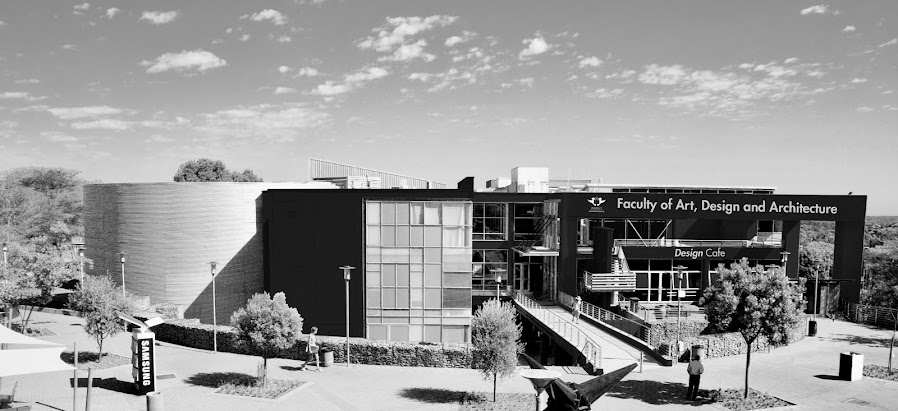The Many Faces of Nelson Mandela.
An Epic Documentary Portrait by Chinese
Artist Li Bin.
FADA Atrium, Bunting Road Campus, University of Johannesburg.
Viewing Times: Mondays to Fridays 09:00 – 16:00.
It took the artist two years to complete, stretching 38 meters wide and
3.8 meters in height, illustrating the iconic life of Nelson Mandela in three
chapters; Prisoner, President and Peacemaker. The portrait of Nelson Mandela is
painted plus minus sixty times in this epic rendering of the worlds most valued
peace icon, it is on display to coincide with Freedom Day. Incorporated in the painting are a vast number of
portraits of world leaders, celebrities and children from across the world - an oil painting of epic proportions in style and scale.
According to the agreement reached by Chinese President Xi Jinping and
the president of South Africa, Jacob Zuma during the president Xi’s state visit
to South Africa in 2013, the year of 2015 was designated the year of China in
South Africa, which according to the Consul General of the People’s Republic of
China, will play a significant role in promoting and consolidating the
traditional friendship between China and South Africa.
The Epic Painting of
Nelson Mandela is therefore hosted by the University of Johannesburg and its
Confucius Institute, and exhibited in the atrium of the Faculty of Art, Design
and Architecture building in support of the bilateral agreement between the two
countries – to share and promote collaboration and interaction on various
levels, including cultural exchanges.
The Epic painting, termed a ‘documentary
portrait’ was painted by Li Bin, and is on view until
9 May 2015. The massive artwork was painted in China in the artist studio, and
the various canvases were transported in a huge crate, before being installed
in the atrium for a gala unveiling to the media, dignitaries, UJ staff and
students on Tuesday 21 April.
Painting Mandela – The Artist’s statement.
I studied historical documents while composing the painting, setting it
at 3.8 × 38 meters, with a
counterclockwise chromatic pattern of a rainbow.
There are three green jewels
on the rainbow: Robben Island, a map of South Africa, and a globe with the
African continent. The 38-meter long painting is divided into a triptych: the
first section “Prisoner” shows a middle-aged Mandela reading in prison against
a dark green backdrop in the shape of Robben Island.
A quotation from Mandela
states: “I detest racialism, because I regard it as a barbaric thing, whether
it comes from a black man or a white man.” The background shows Mandela’s
experiences from his childhood to his prison years.
The second section of the
triptych, entitled “President,” shows Mandela walking toward the viewer against
a backdrop of a green map of South Africa. The background shows Mandela coming
out of prison, calming down the riots, and election to president as well as the
formation of the Truth and Reconciliation Commission with its publicity
slogans: “Truth hurts, but silence kills.” “If your mother was tortured your
father murdered and children abducted, would you be silent ?”
The third section
of the triptych “Peacemaker” shows a white-haired Mandela surrounded by
children of all races against a backdrop of the globe. The background shows his
career after retirement, his brokering of peace in international conflicts as
well as his charity work. The overall color spectrum is that of a rainbow
holding three green gems, from dark to bright, from small to large.
Afterwards, I painted scenes from the grand funeral at the end of the
rainbow: undulating amidst the noble color purple is the cadenza of Mandela’s
passing. I painted the guests at his funeral and added other world leaders who
sent their condolences. Around the eight escorts of Mandela’s casket, I painted
ordinary people from South Africa and around the world.
All are sending him off
with deep thought and admiration. Touched by this final magnificence, I believe
that this last cadenza will help the monumental painting Mandela forever
resonate in the hearts of the viewer.
About the painter. Mr. Li Bin
His major works include Scars; Maple; Zhang Zhixin; One Who Risks Being
Sliced to Pieces Dares to Unsaddle the Emperor; Memory of the Oil Lamp series;
Founding Father; From Emperor to Citizen (The Release of Pu Yi); Communists;
the Morning of Shanghai, Hello Xiaoping; The World Belongs to You; Salute to
Luo Zhongli; Revolutionary Couple (Sun Yat-sen and Song Qingling);
Nineteen-Fifties; Dreamscape: No. 1 Zhengyi Road; Sunshine on April 24, and
other works. He has painted Madame Chiang Kai-shek, American Congresswoman
Nancy Polosi and other famous personages. He repainted Maple in 2009.


































